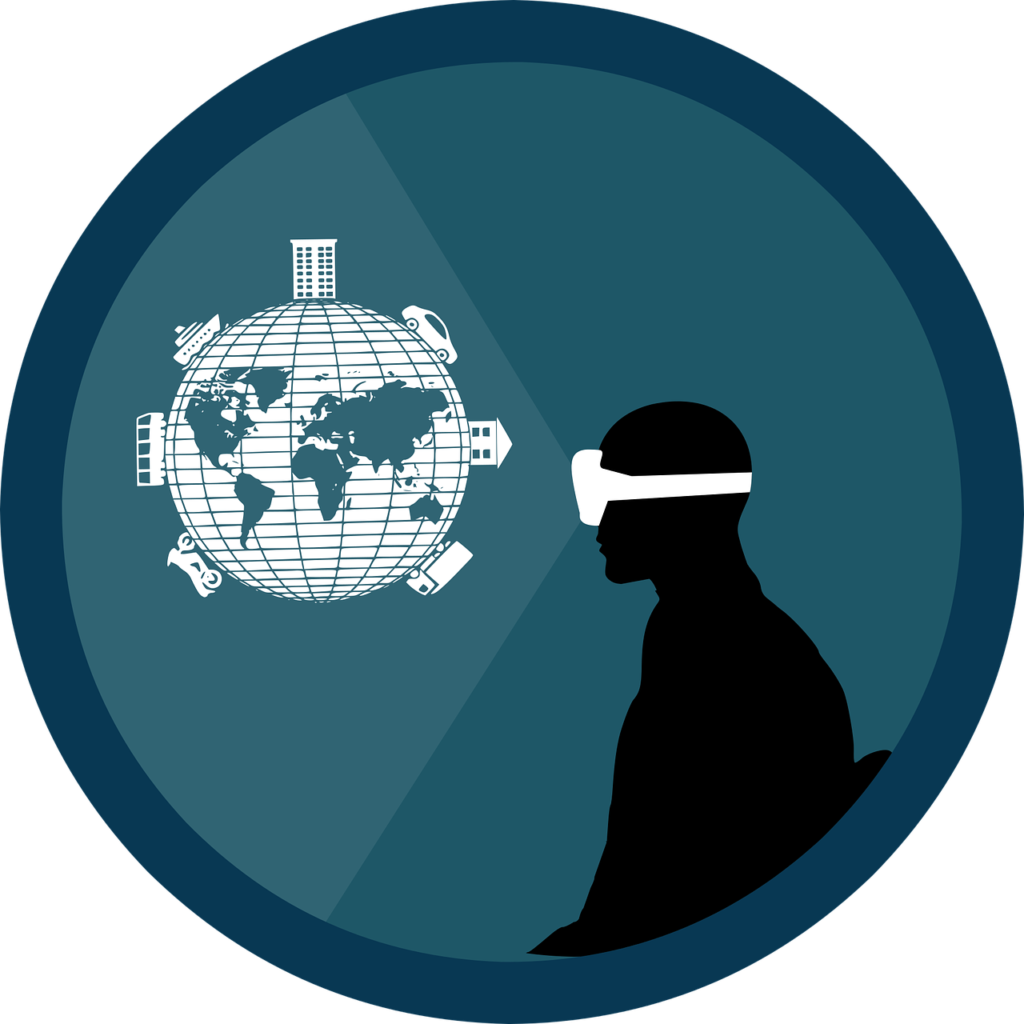
The world through Virtual Reality. Image by Mohamed Hassan from Pixabay
In the realm of technological advancements, “Virtual Reality for Seniors” is making a substantial difference. Virtual Reality (VR) creates dynamic environments for seniors to explore, promoting mental engagement, physical activity, and overall wellbeing. As we dive into the benefits of VR for seniors, it becomes clear that this technology offers an exciting way to enhance the golden years.
Exploring the World
VR can transport seniors to places they might not be able to visit physically. Whether it’s a childhood neighborhood, a far-off country, or even a fantasy world, VR can create deeply personal and immersive experiences. These experiences can not only evoke joy but can also help alleviate feelings of isolation and loneliness, common issues among the elderly population.
Moreover, VR provides an entertaining medium for cognitive stimulation. Interactive games and puzzles can sharpen memory, attention, and problem-solving skills. Besides, these experiences are typically designed to be engaging and enjoyable, which can encourage consistent use and cognitive training.
Virtual Reality for Seniors Physical Rehabilitation
Virtual reality also holds potential for physical rehabilitation. With VR, physical therapy exercises can be gamified, making them more enjoyable and engaging for seniors. This technology can track movements, providing valuable feedback to healthcare professionals about a senior’s progress.
For seniors living with chronic pain, VR can provide some relief. The immersive nature of VR can distract from discomfort and reduce the perception of pain. Research shows that VR can be an effective non-pharmacological tool for pain management, which is especially valuable for the elderly.
Stress and anxiety can be addressed with VR too. Through guided meditations, tranquil landscapes, and soothing sounds, VR can create calming experiences. These can help seniors relax, sleep better, and improve their overall mental health.
Virtual Reality for Seniors Presents Challenges
Nevertheless, the implementation of VR in senior care presents challenges. User-friendliness is crucial as not all seniors are tech-savvy. Caregivers need proper training to facilitate VR experiences effectively. Also, health factors like motion sickness or disorientation need to be considered and monitored during VR use.
Despite these challenges, the benefits of VR for seniors are immense. It provides an innovative way to engage seniors mentally, physically, and emotionally. As technology advances, we are likely to see VR becoming an increasingly common tool in senior care. It holds promise to transform the quality of senior living, providing vibrant and engaging experiences.
“Virtual Reality for Seniors” is more than just a novel concept; it’s a significant step towards enhancing the quality of life for our seniors. With careful integration and a keen focus on the needs and comfort of seniors, VR can truly be a game-changer in the field of elderly care.